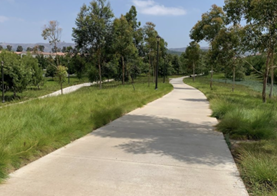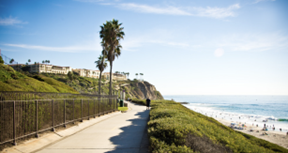Learning how to live a healthy brain lifestyle is essential at any age. Why? Research suggests that lifestyle factors that form the six pillars of brain health may help to reduce the risk of cognitive decline and Alzheimer’s disease.
One of these pillars is exercise and physical health. Many can improve in this area. Less than a fourth of Americans hit the recommendations for physical activity.
Physical activity is crucial to our overall well-being, but it also impacts our brain health. According to research “physically active people seem less likely to develop cognitive decline, all-cause dementia, vascular dementia, and Alzheimer’s disease when compared with inactive people.”* Furthermore, as mentioned by the Mayo Clinic, studies have shown that physically active people are less likely to experience a decline in their mental function and have a lowered risk of developing Alzheimer’s disease.
Getting started
If you’re struggling to be physically active or trying to exercise more there are many things that can help you and contribute to your success.
Start with some self-reflection. Ask yourself the following questions:
- What am I already doing to exercise and move my body?
- Is there room for me to step it up and move more?
Each person’s situation and answers will vary according to their own personal health and situation, but it’s a good way to get started.
Try this: Consider using a pedometer to help you track and measure your daily activity and progress. Many devices such as smartphones or smartwatches have a digital pedometer already built in.
Flexibility and Balance
Flexibility and balance both play important roles in physical activities. Flexibility is used constantly during everyday activities and having good flexibility can help reduce stiffness and prevent injuries.
Here are a few tips you can use to maintain your flexibility:
- Warm up before stretching to loosen your muscles
- Move slowly until you feel your muscle
- Hold the stretch for about 10 to 30 seconds
- Relax then repeat the stretch 2 to 3 more times
Balance is your ability to control your body’s movements and is important to carry out routine activities, like going up and down stairs, walking, etc. Normal aging, injury, illness, and medications are things that can affect your balance. If you have concerns about your balance, talk to your doctor before exercising.
Keep these balancing training tips in mind:
- Balance starts with good posture
- Good physical form when you walk is essential for balance
- You can practice balancing by standing on one leg for 30 seconds
Recommended exercise time
The World Health Organization (WHO) recommends 150 minutes of moderate-intensity or 75 minutes of vigorous-intensity exercise per week. How can you differentiate between the intensity? Moderate physical activity is the kind of exercise when you can talk, not sing. Vigorous physical activity happens when you can only talk in short phrases. For example, walking can be moderate, while running can be vigorous.
Remember, when you’re following these recommended times, you don’t need to do it all in one day. You can break it up over multiple days.
Here are four simple ways of what you can do to stay active, as suggested by the CDC:
- Turn up the music at home and dance. Twisting and turning can be a fun way to be active.
- Take active breaks. Squat or march in place between programs while you’re watching television. Or stand on one leg to improve balance.
- Add physical activity to your daily routine. When you arrive at the grocery store park further back from the front so you can walk longer, use stairs instead of the elevator, and if you already go for a walk regularly, start carrying hand weights.
- Walk the dog. Dogs are great walking companions and can help you have an active lifestyle.
Remembering that some activity is better than none is important, and every little bit counts. Simple chores such as raking and bagging leaves, using the lawn mower, or passing the vacuum can help you get active.
Remember: Consult your doctor before starting new exercise routines or check with your health care provider if you haven’t been active and want to start a vigorous exercise program
Exercising may not always be easy or appealing, but it does contribute to your wellness and can have a positive effect on your brain health. If you’re looking for a local place to walk or run to do some outdoor exercise, check out the Walk4ALZ Walking Corner for a full list of Orange County parks, trails, and other outdoor spaces you can exercise in.
Local trails
Jeffrey Open Space Trail, Irvine
Salt Creek Trail, Dana Point
*Source: Gallaway et al., 2017; Hamer & Chida, 2009; Sofi et a., 2011; Stephen et al., 2017
Related Information
Exercise for Older Adults
Easy-to-follow exercises designed specifically for older adults that can be completed with common household items—no need to leave the house. Read more here.
The Six Pillars of Brain Health
Discover tips and information to help better your brain health. Learn more here.
Educational Classes
Enroll in our free classes to better understand brain health and dementia topics and learn practical strategies and techniques you can use in your life. Learn more here.
Alzheimer’s Orange County provides comprehensive support to over 34,000 Orange County families and individuals every year through brain health and dementia education, care consultations, community resource connections, Adult Day Health Services, and other vital services for every person’s journey. Click here to donate to support our work.




